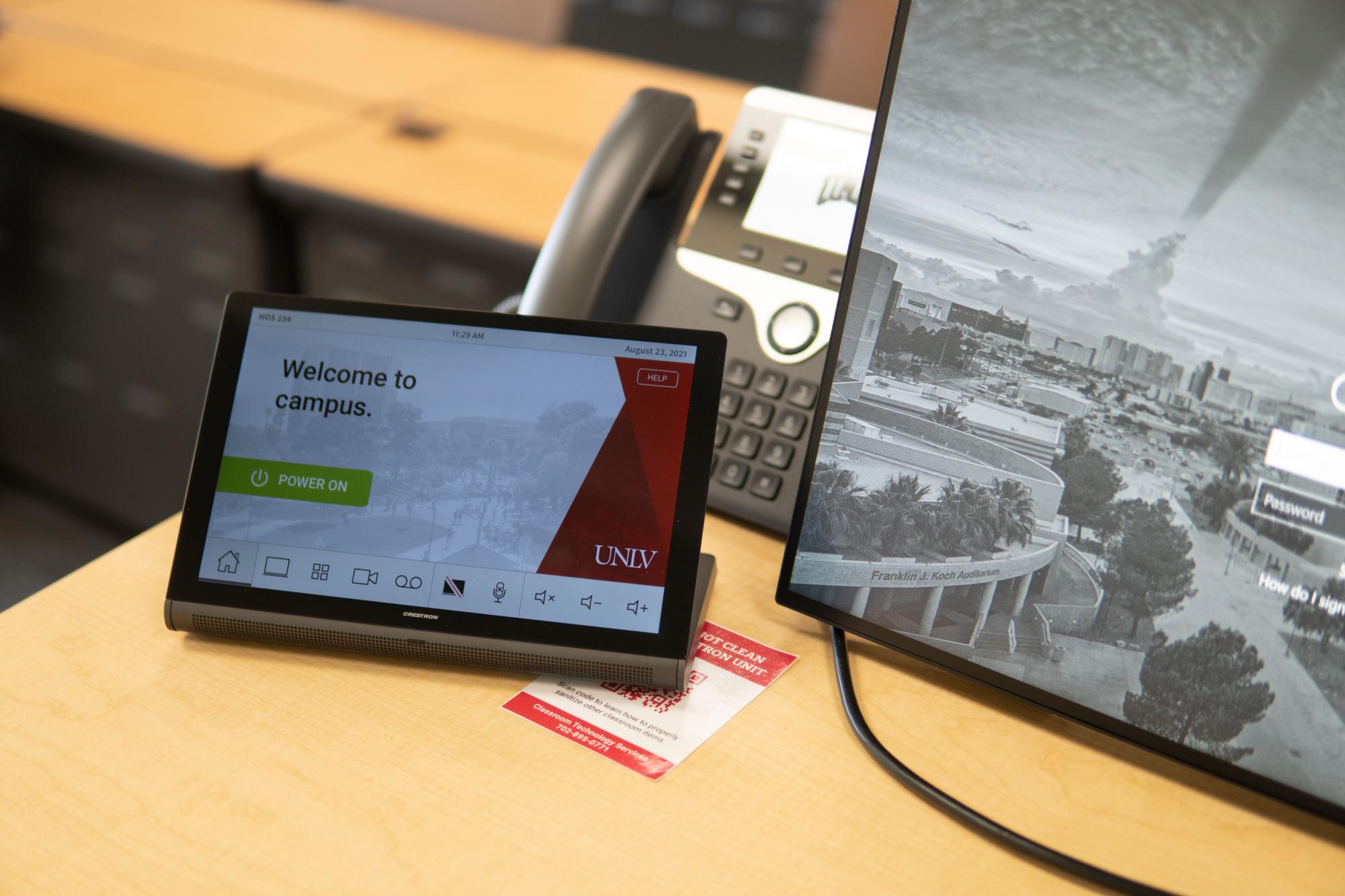Exclusive First Look! UNLV Goes All In On Lecture Capture

Listen to this article
The University of Nevada, Las Vegas (UNLV), located less than two miles east of the Las Vegas Strip, is a public research university with a diverse student body of over 31,000 undergraduate, graduate, and doctoral students. No stranger to leveraging technology to enhance the educational experience, UNLV was one of the first higher education institutions to adopt lecture capture across their sprawling urban campus.
“Our journey with lecture capture started in 2018,” Frank Alaimo, manager of Classroom Technology Services at UNLV explained. “We did a pilot program, adding ceiling microphones, cameras, and lecture capture hardware devices inside the lecterns. But, with failures, update issues, and increased recording demands on our campus, we realized that we needed a better piece of hardware. We were still reliant upon equipment that was just, frankly, outdated.”
A team led by Alaimo and Andrew Borts, senior instructional technology specialist at UNLV, spearheaded the university’s recent effort to finally bring a cohesive, state-of-the-art lecture capture solution to campus—one that would integrate seamlessly with an existing Panopto content management system, as well as Crestron room control.
An AV Solution, Years in the Making
Rigorous testing eventually led Alaimo and Borts to select Epiphan Video’s Pearl Nexus. The enterprise-grade lecture capture solution offered UNLV everything it needed: effortless integration with AV infrastructure, robust remote management through Epiphan Edge, and streamlined installation allowing over 200 units to be deployed across campus. The simplicity and speed of installation were remarkable, with each device taking less than 10 minutes to set up.
With approximately 215 general-purpose classrooms—more than half of which needed to be equipped with lecture capture—as well as research spaces of various kinds, versatility was another key sticking point for UNLV. “We have plenty of different spaces where research is going on: labs, golf simulators, instruction kitchens, and all types of other facilities that needed to make use of this recording capability,” Alaimo said. “When it came to our AV ecosystems in our classrooms, the Pearl Nexus just worked with everything.”
Read the rest of the case study on the AV Network website.


